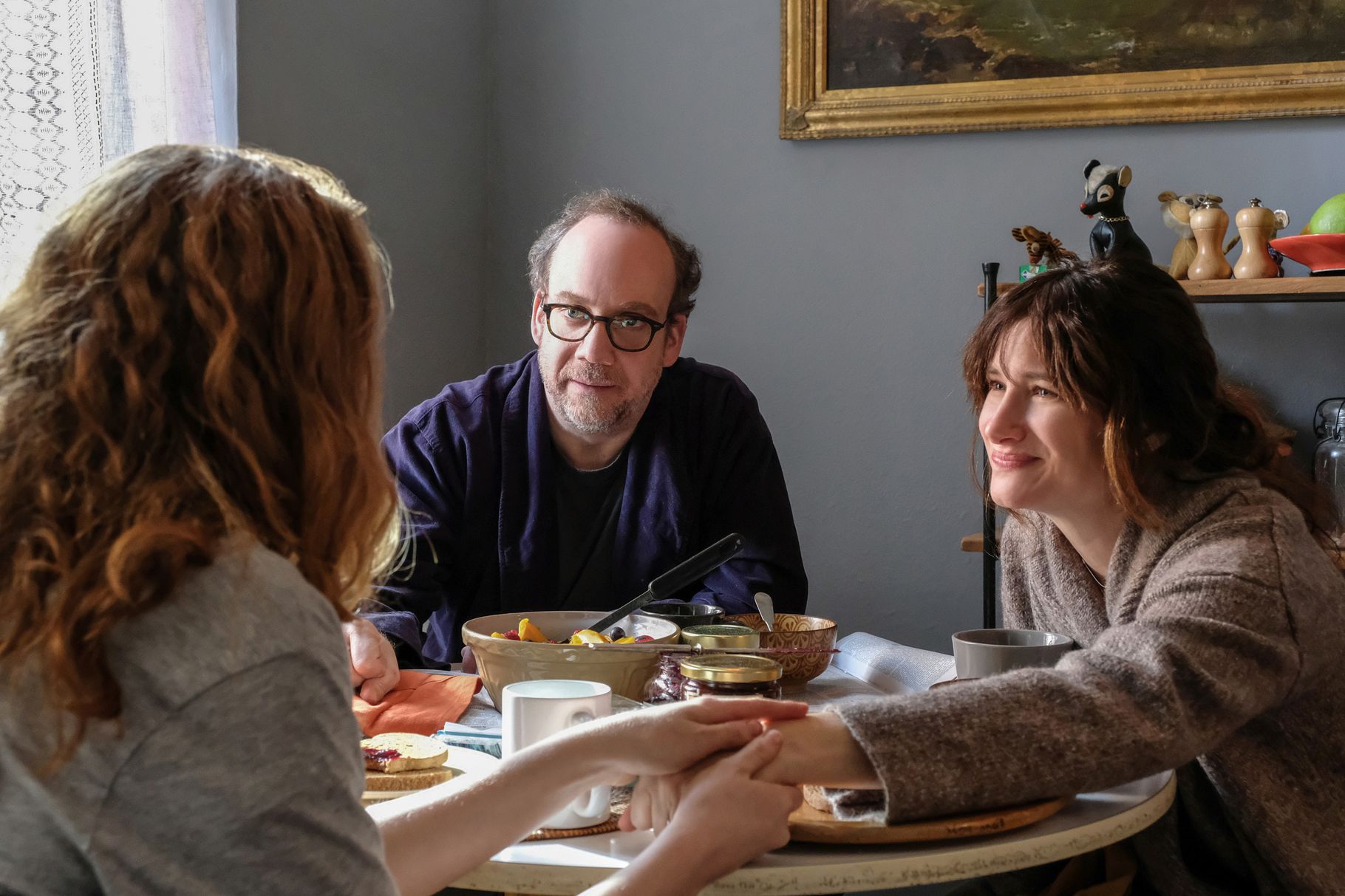The best things I saw at Sundance this year have one thing in common: You probably won’t be able to see them in a movie theater. In the case of A Thousand Thoughts, a “live documentary” that combines film footage, live narration, and a performance by the Kronos Quartet, that’s because the project was never designed for conventional exhibition. But Tamara Jenkins’ Private Life, a bittersweet comedy about a couple’s attempts to conceive a child through IVF, and Jennifer Fox’s The Tale, a wrenching drama about a 13-year-old girl being molested by her track coach, could easily hold a screen at your local multiplex had the former not been produced by Netflix and had the latter—one of the most buzzed-about titles in a year that was relatively short on buzz—not been bought by HBO.
It’s a bit premature to declare this a paradigm shift; the year in which some of Sundance’s hottest titles are headed straight to TV and laptop screens was also a year in which buyers carped about the lack of potential commercial breakouts and awards pundits strained to crown next year’s frontrunners. (I didn’t see Assassination Nation, a gonzo “Salem witch trials for the social-media era” thriller that sold for over $10 million, but I couldn’t find a soul who was enthusiastic about it, or who witnessed the kind of ecstatic audience reaction that would make that seem like a reasonable price.) It was also, not coincidentally, a year in which stories by and about women and people of color dominated the field—roughly three-quarters of Sundance’s dramatic competition lineup, depending on how you count the co-leads. That’s not to say buyers were overlooking this year’s equivalent of The Big Sick, and after years in which movies like The Birth of a Nation and Me and Earl and the Dying Girl debuted to Sundance raves only to meet with bewildered stares from low-altitude audiences, a comparatively lukewarm acquisitions climate might be seen as a welcome sign. But the confluence of a noticeably more diverse festival lineup and the ease with which buyers yawned that this year’s films were simply “boring” struck a discordant, at times infuriating note.
That critics at the movie-industry bible Variety separately compared The Tale, whose story of teenage sexual assault is closely modeled on writer-director Jennifer Fox’s personal experience, and Grand Jury Prize winner The Miseducation of Cameron Post, about a teenage girl subjected to the odious process of anti-gay “conversion therapy,” to Lifetime movies indicates the degree to which movies centered on women—even ones with such timely, even grueling subject matter—still struggle to be taken seriously. (Also, Lifetime has UnReal now; please update your databases.) And while Reinaldo Marcus Green’s Of Monsters and Men, an elegant triptych about police violence that splits its perspective between a bystander, a black beat cop, and a promising high school athlete, did win a special jury award for debut feature, the coveted audience award went to Burden, a well-meaning but stiff biopic about a white supremacist seeing the error of his ways, in which people of color play only a facilitating role.
Distribution plans have yet to be announced for the best nonfiction films I saw: Robert Greene’s Bisbee ’17, about an Arizona mining town that drove out its largely Mexican and Eastern European workforce when it threatened to unionize, and how that ugly history of racist and anti-union activity resonates a century hence; and RaMell Ross’ Hale County This Morning, This Evening, which aims for “visual justice” in its lyrical portrait of black life in the deep South. But while both demand to be seen, and heard, on the big screen, the theatrical market for documentary is an increasingly limited one. So in many cases, a festival like Sundance may not just be your first chance to see these movies in a movie theater, but the only one.
Far more people will be exposed to The Tale and Private Life via cable or streaming than would ever have seen them in theaters, and neither has definitively ruled out a theatrical component to their release. (Distribution plans for both are still being finalized.) But to judge from past patterns, even if they do open in a handful of theaters, it will be as a pit stop on the way to your living room. That’s where we do most of our watching regardless, and with filmmakers from Charlie Kaufman to Michael Haneke turning their efforts to the (not-so-) small screen, any stigma that might once have attached to it has long since vanished. But while both films’ intimacy arguably lends itself to the cozy confines of home, there’s something special about seeing such private moments blown up so much larger than life, and sharing them with a few thousand rapt strangers. That’s an experience you’re increasingly unlikely to get anywhere outside of a film festival, and one of the things that makes the trip into the mountains of Utah so worth it.
